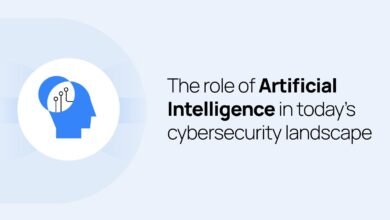Intent: The Real Difference Between Bots and Humans

▼ Summary
– Cybersecurity teams should focus on intent rather than just identifying bots, according to Jérôme Segura, VP of Threat Research at Datadome.
– Advanced AI agents and sophisticated bots are making it difficult to distinguish between human and automated activity.
– Intent-based detection is a strategy that can help protect against fraud and malicious traffic.
– The video emphasizes the need for a new approach in cybersecurity due to evolving threats.
– Jérôme Segura shares insights on how to implement intent-based detection methods effectively.
Understanding the true distinction between automated bots and human users has become a central challenge for modern cybersecurity teams. While traditional methods focused on identifying non-human traffic, the real battleground now lies in discerning malicious intent behind online actions. Sophisticated artificial intelligence agents and advanced bots have evolved to mimic human behavior with startling accuracy, making simple bot detection insufficient for robust protection.
Jérôme Segura, Vice President of Threat Research at Datadome, emphasizes that cybersecurity must shift its focus toward analyzing the purpose behind digital interactions. Rather than asking whether an actor is human or automated, security professionals should determine whether the activity demonstrates harmful objectives. This approach moves beyond binary classification and delves into behavioral patterns, session analysis, and action sequences that reveal underlying motives.
The emergence of AI-powered tools has dramatically complicated the cybersecurity landscape. These systems can simulate human browsing patterns, solve CAPTCHAs, and even engage in complex conversations that bypass conventional detection mechanisms. What separates them from legitimate users isn’t their technical capability but their fundamental purpose—whether they’re attempting credential stuffing, content scraping, inventory hoarding, or other fraudulent activities.
Implementing intent-based detection requires a multi-layered strategy that combines machine learning algorithms with real-time behavioral analytics. Security systems must evaluate numerous signals including mouse movements, keystroke dynamics, navigation patterns, and interaction timing. By establishing baseline behaviors for legitimate users, these systems can flag anomalies that suggest malicious intent regardless of whether the source appears human or automated.
This paradigm shift offers significant advantages for organizations combating modern threats. Instead of blocking all automated traffic—which could disrupt legitimate services like search engine crawlers or monitoring tools—security teams can precisely target harmful activities while permitting beneficial automation. The result is improved user experience for genuine customers while maintaining strong defenses against fraud, account takeover attempts, and other malicious campaigns.
Adopting an intent-focused security model represents the next evolution in digital protection. As attackers continue refining their methods, defenders must look deeper than surface-level characteristics to understand the true nature of each interaction. This approach provides a more nuanced and effective framework for separating friendly automation from hostile actors in an increasingly complex digital ecosystem.
(Source: HelpNet Security)





